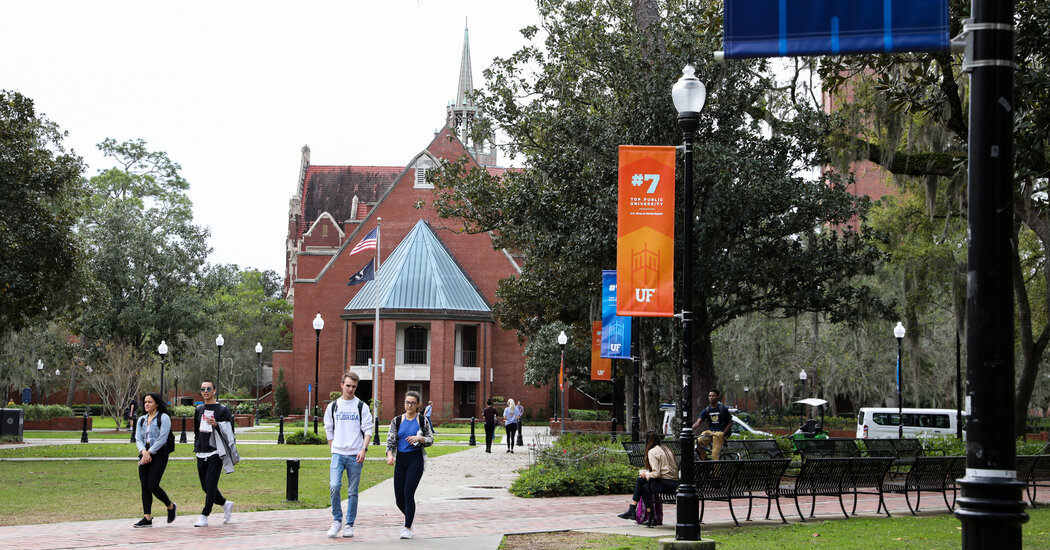Ashes Were Given to His Family. But He Wasn’t Dead.
The first sign that Tyler Chase got that he might be dead came at a convenience store. He had food stamps, but his benefit card didn’t work.
The next sign was when he contacted Oregon state officials, who told him that a death certificate had been filed in his name.
Then, weeks later, came the most disturbing development: An urn of ashes had been sent to his family, and it was sitting in his cousin’s closet.
In reality, he was very much alive.
Mr. Chase’s life coursed through years of drug use, homelessness, severed family ties and a bureaucracy that documented his death without his fingerprints or any immediate family present when the body believed to be his was cremated.
He began using methamphetamines as a teenager, and after the death of his mother in 2020, he plunged into a dark period of serious addiction and crime. Then, in January 2023, he was arrested on several charges, including burglary and drug possession.
“My life was a mess,” Mr. Chase, 22, said in a recent phone interview.
Eventually, he was released into a transitional housing facility in Portland, Ore., on the condition that he complete an addiction recovery program. By early October, when he learned of the death certificate, Mr. Chase had been sober seven months and was looking for work, he said.
“Obviously, you can’t really apply to places when you’re dead.”
‘I told you so.’
Several weeks after the convenience store incident, the threads of the grim mix-up began to unspool — revealing errors that left one family without notice of their dead loved one, and another grieving the loss of Mr. Chase.
In mid-December, an officer with the Portland Police Bureau turned up at Mr. Chase’s transitional housing facility, wondering why it was seeking the documents of a man whom officials had identified as dead.
Mr. Chase recalled seeing his photo in the hands of an officer, with a look of disbelief on his face. “Never in the 20 years I’ve served,” Mr. Chase remembered the officer as saying, “have I dealt with something like this.”
“I was thinking like, Well, yeah, I told you so.”
The next evening, the lead investigator at the Multnomah County Medical Examiner’s Office visited Mr. Chase to explain its mistake, he said.
Months earlier, another male resident of the recovery center had been found dead of a fentanyl overdose, with Mr. Chase’s wallet, presumably stolen, he recalled the examiner telling him. Mr. Chase recalled losing his wallet, and he described the other resident as a few years older, shorter and skinnier with ginger hair. Mr. Chase said that he had tried to persuade the man to stay in the program, but he left.
The mix-up of identity occurred because the dead man was carrying Mr. Chase’s wallet and temporary driver’s license, the medical examiner’s office confirmed in a statement.
‘I had an out-of-body experience.’
Mr. Chase, in and out of treatment for years, had lost touch with his family, including his father. When they were told by the authorities that he had died of a drug overdose, they had little reason to doubt it.
The last relative with whom he’d been in contact was his cousin Latasha Rosales, 35.
While the examiner’s office said that Mr. Chase’s immediate family had declined to view the body before cremation, his father, Toby Chase, said that he was never asked. Neither was the rest of his family, Ms. Rosales said.
“We deeply regret that the misidentification happened,” the medical examiner’s office said in its statement. The office said that it had since launched a “comprehensive review” of procedures and that in the future it would require bodies found with temporary identification to also be identified by fingerprints at the time of the death investigation.
J. Keith Pinckard, the president of the National Association of Medical Examiners, said in an email that misidentification of the dead was “quite rare” and that he had come across only one or two cases in his career. “I am not aware of any patterns that may exist,” Dr. Pinckard said.
Mr. Chase’s cousin, Ms. Rosales, said that her family was distraught, but not shocked, when they were notified of his death. She last saw Mr. Chase after his mother’s death in 2020 but had gradually lost contact.
“The next thing I hear about him is that he died of a drug overdose,” she said. The family raised more than $1,000 to have the body cremated, and Ms. Rosales collected the urn of ashes in October, she said.
A few nights before Christmas, Ms. Rosales received a call from a private number, informing her that Mr. Chase was in fact alive. “I thought I was being pranked,” she said. A woman’s voice acknowledged the surreal nature of the call and asked Ms. Rosales if she would like to switch to video. “Then she faced the phone to my cousin,” Ms. Rosales said of the caller. “I felt like I had an out-of-body experience.”
‘That could have been me.’
The next day, the cousins met in person. Mr. Chase was not dead or sick but tall, strong and healthier than Ms. Rosales had seen him in years.
“I just felt like I should have done more after his mom died,” Ms. Rosales said. “I can be there for him now — I can do the things that I had wished that I could have done before.”
Days later, Mr. Chase, who had since been hired by an organization that helps the homeless in Portland, was spending Christmas with Ms. Rosales and her children. He said that being confused with another man who had overdosed made him realize “that could have been me.”
The joy of being reunited, Ms. Rosales said, has been tainted with confusion and anger at the authorities, whom she believed saw the body as just another dead addict. Fentanyl and methamphetamine drove a record number of deaths among people experiencing homelessness in Multnomah County in 2022, according to a report released in December.
“I had ashes of someone’s child, and they didn’t even know that their loved one was dead,” Ms. Rosales said.
“That’s what really saddens me about the situation,” she added. “They just treat them like they’re no one.”
Sheelagh McNeill and Susan C. Beachy contributed research.


